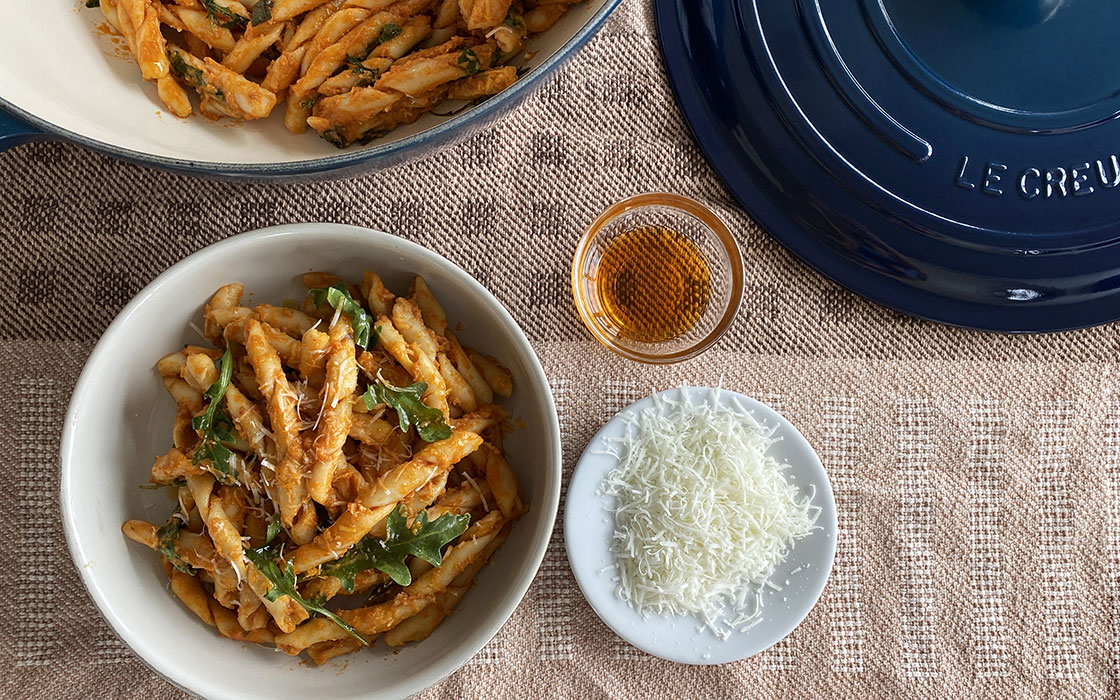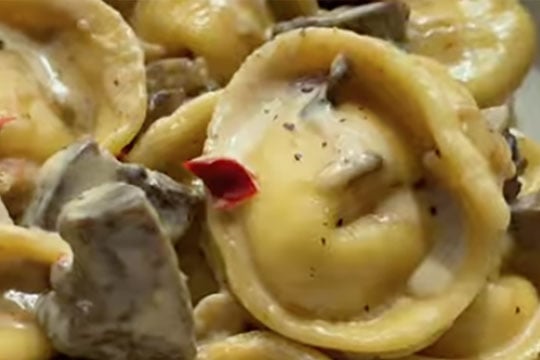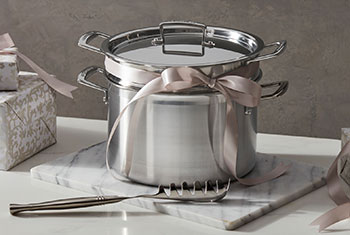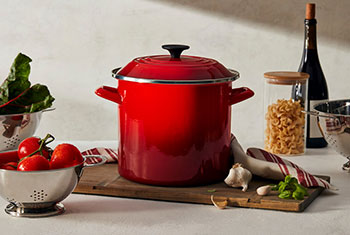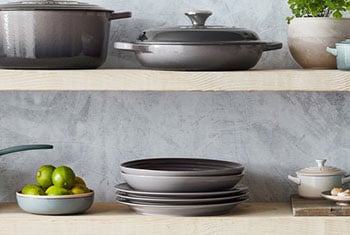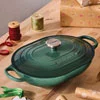Homemade pasta might seem like a labor of love, but it’s really quite simple to make and always worth every delicious bite. The key is having the right tools and ingredients on hand, and then learning the technique to create the perfect dough and roll, form, cut and stuff it into an endless number of pasta shapes and sizes.
To learn how to master this age-old Italian tradition, we partnered with Alexandra Borland who transforms pasta dough into edible works of recipe art that she shares with her followers. She shared her expert tips and techniques with our test kitchen experts for making homemade pasta, along with some recipes to get you started making pasta at home.
Get the Recipe: Ricotta and Goat Cheese Cappelletti in Miso Mushroom Sauce Get the Recipe: Busiate Pasta with Spicy Garlic and Tomato Confit Sauce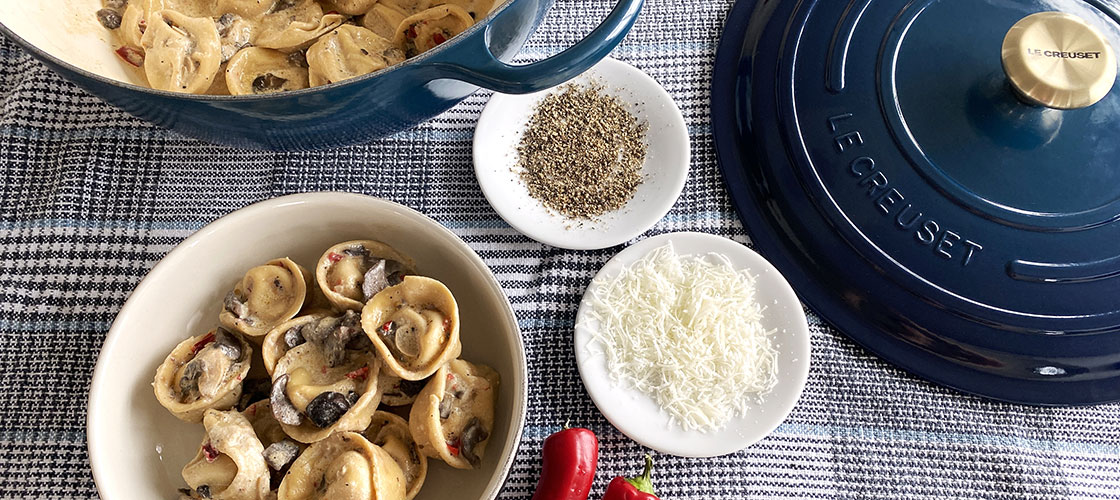
The Right Ingredients and Tools for Homemade Pasta
Making pasta at home is simple once you have the right ingredients and tools on hand – thankfully, you don’t need a laundry list of either one to be successful. In fact, most pasta dough is made with just flour, sometimes salt and either water and/or eggs for the liquid. Since there are so few ingredients in the dough, though, the quality of the ingredients (and especially the flour) is important.
First off, there are a few different types of flour used for homemade pasta dough. Finely ground semolina flour is a pasta favorite for a reason. Made from hard durum wheat, it creates a dough that is easy to work with and creates pasta that has a characteristic toothsome bite. ‘00’ is another type of finely ground flour made from soft wheat, and with its lower gluten content creates a chewier consistency for pasta and pizza doughs. If you can’t find 00 flour, all purpose can be used as a substitution. Whole wheat flour can also be used, but with its lower gluten content will need to be combined with all purpose flour so that the dough can be more easily rolled and stretched.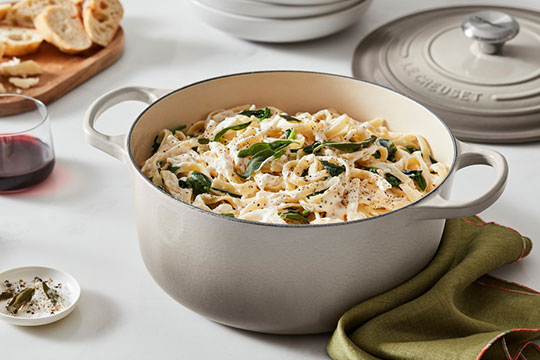
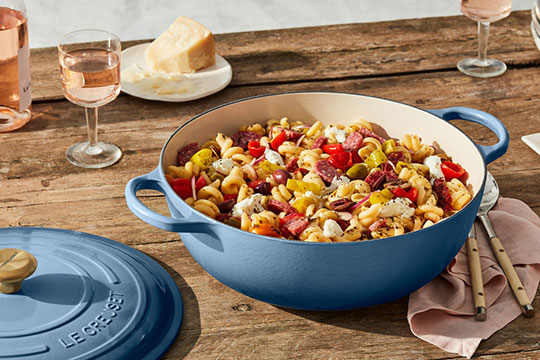
Once the dough is made, you need a way to roll and stretch it to the perfect thickness. A hand-crank pasta machine or pasta attachment for a stand mixer are the easiest ways to stretch the dough. But you can also use a rolling pin, just be sure you take the time to roll out the dough until it’s thin enough for the recipe. Most pasta machines and attachments also come with a cutter to cleanly slice the dough into long strands of fettucine and spaghetti, but a sharp knife works just as well for thicker shapes like tagliatelle or pappardelle. If you’re making stuffed pasta, a ravioli stamp, biscuit cutter or pasta wheel work well for cutting a variety of shapes in the dough.
Lastly, once the pasta is cut or formed, you will need a few tools and cookware to help with drying the pasta, cooking it, and making sauce:
- Sheet Pans - For holding the pasta after it’s been rolled, cut and shaped so that the individual pieces do not stick together.
- Stainless Steel Mixing Bowls – For making sauces and fillings.
- Stockpot – For cooking pasta. Be sure to cook fresh pasta in plenty of simmering salted water so it does not clump and stick together.
- Stainless Steel Colanders – For draining pasta.
- Spatulas, Pasta Fork and Tongs – For tossing pasta, making sauces and serving.
- Dutch Oven, Chef’s Oven or Skillet – For making sauces and tossing the pasta with the sauce.
Step by Step: How to Make Homemade Pasta Dough
Now that you have the ingredients and tools ready, here is how to make the pasta dough. Be sure to watch Alex’s videos to show you step by step.
- Be sure to weigh your ingredients to ensure the dough is the perfect texture and consistency.
- Pour the flour into a mound on a clean, flat work surface. Make a well in the center of the flour.
- Pour the eggs or water into the center of the well. If using eggs, lightly beat the eggs in the center of the well using a fork.
- Slowly start dragging the edges of the flour into the center of the well with the fork to combine the flour with the liquid until the dough starts to come together.
- Form the mixture into a ball with your hands and knead until smooth, about 10-15 minutes. Do not rush this step, the more time you knead the dough the easier it will be to work with.
- Cover the dough with plastic wrap or a towel and let it rest for at least 30 minutes to an hour. Likewise, letting the dough rest will make it easier to stretch and roll out.
- Remove the dough from the plastic wrap and cut into smaller pieces of roughly equal size. Work with one piece at a time and keep the rest covered with plastic wrap.
- Starting on the widest setting, run the dough through a pasta machine (or roll by hand with a rolling pin). Continue stretching pasta dough, increasing the number on the roller one at a time, until dough is desired thickness.
- Cut, roll, shape or stuff pasta dough into desired shape, or use whole sheets as is for layered pasta recipes.
- Toss cut or formed pasta with flour or cornmeal and spread out on a sheet pan in a single layer, or hang from a drying rack so pasta does not stick together. Allow pasta to air-dry until ready to cook.

